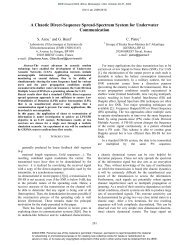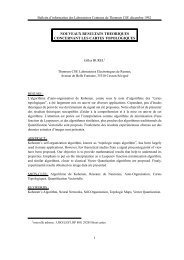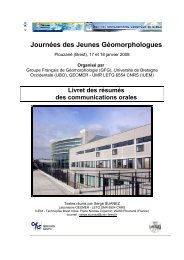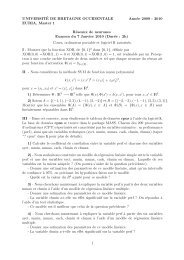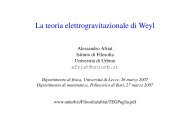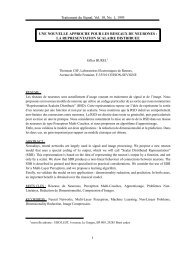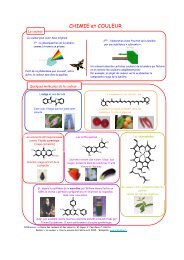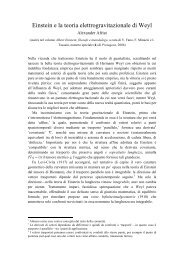Abstract 1 Introduction
Abstract 1 Introduction
Abstract 1 Introduction
Create successful ePaper yourself
Turn your PDF publications into a flip-book with our unique Google optimized e-Paper software.
Battleeld Atmospherics Conference (BAC’93), Nov 30 - Dec 2, 1993, Las Cruces, New Mexico, USA<br />
O<br />
i<br />
W<br />
ij<br />
X<br />
j<br />
F<br />
O<br />
j<br />
Figure 2: The neuron model<br />
Let us note E the mathematical expectancy. The learning algorithm adjusts the<br />
weights in order to provide correct outputs when examples extracted (in a random order)<br />
from a training set are presented on the network input layer. To perform this task, a mean<br />
square error is dened as:<br />
where<br />
e S <br />
<br />
output neurons<br />
e MS Ee S <br />
1<br />
obtained output desired output2<br />
2<br />
Let us note g ij e S<br />
, S j the desired outputs, and O j the obtained outputs. It has been<br />
W ij<br />
proved [3]<br />
<br />
that g ij j O i ,where<br />
j O j S j F X j when j is on the output layer,<br />
<br />
and j <br />
k W jk F X j when j is on another layer. Since the examples are<br />
successors j<br />
extracted in random order (and provided that the training set is signicant), the gradient of<br />
e MS can be approximated by low pass ltering of g ij :<br />
g ij t 1 g ij t g ij t 1<br />
The backpropagation algorithm performs a gradient descent according to:<br />
W ij t g ij t<br />
Once learning is achieved, the network can deal with new data.<br />
the neuron whose output value is the highest determines the class.<br />
For classication,<br />
Acondence measure (between 0 and 1) can also be dened as :<br />
condence = 1 2<br />
( highest output - second highest output )<br />
3



